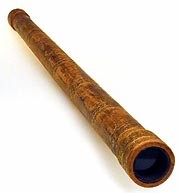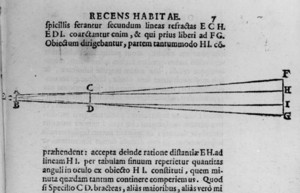Where did the idea of observing the sky using a telescope come from and how did Galileo Galilei improve it, what did Galileo see in his telescope, and how did it work.

The story of Galileo Galilei's telescope shows us, as in any beautiful story of discoveries, that it is not the one who made the discovery who reaps the glory, but the one who knew how to make good use of it for the first time.
400 years ago today, Galileo showed the sky to a group of Venice legislators and conducted the first organized astronomical observation with a telescope, a device he developed at the same time based on an invention that spread from Holland.
In the late summer of 1608, a new invention spread across Europe - the detective glass. These were the first weak telescopes produced by all the advanced opticians of that time. The first telescope was created in the laboratory of Hans Lipperschi in the Netherlands. This primitive telescope could only magnify 6-7 times. Similar to the situation today, even then manufacturers in other countries tried to quickly copy the invention and market it on every street corner, but Galileo's friends managed to convince the local government to wait - because they were sure he could improve the design.
When the Italian scientist and cluster man Galileo Galilei first heard about this optical device, he began his engineering efforts and sought to improve especially its magnifying ability. Galileo's telescope was a simple array of glass lenses used to magnify objects. His first version only improved the look by a factor of eight, but he continued to improve it. Within a few years he began to polish the lenses himself and changed their alignment. Galileo's telescope could now magnify 10 times more than the eye but had a very narrow field of view.
What did Galileo see in his telescope?
One autumn night, Galileo pointed at the one thing that everyone thought was as smooth as a polished gem - the moon. Imagine his surprise when he found it "uneven, rough, full of holes and bumps." as he later described.
Galileo's telescope had its own problems, such as a narrow field of view that could only show a quarter of the lunar disk without changing its position, but the revolution had begun.
Months passed and the telescope improved. On January 7, 1610, he pointed his new telescope, this time with 30 times magnification, towards Jupiter and discovered three bright "stars" near the planet. One to the west of it and two to the east. All three were arranged in a straight line.
The next evening, Galileo looked at Jupiter again and found that all three "stars" were now west of the planet, still in a straight line. There were other discoveries that awaited Galileo's telescope: the bulge near the planet Saturn (later it was clarified that it was the edge of Saturn's rings), spots on the surface of the Sun, and the configuration changes of Venus similar to those of the Moon. Just like today's scientists, Galileo Galilei published his findings in 1610 in a small booklet known as "The Messenger of the Stars". No, he was not the first to point the telescope at the sky, but Galileo was the first to do it in an orderly and systematic manner. These discoveries strengthened the heliocentric model built by Copernicus.
What was Galileo's telescope and how did it work?

Galileo's telescope was a prototype of a refracting telescope. As can be seen in the graph taken from Galileo's book The Messenger of the Stars (book scan courtesy of Trinity College, Cambridge). It was a simple array of lenses where polished lenses were fixed to each side of a hollow cylinder. Galileo had no chart to work by, but used trial and error to find the best position for the lenses. In Galileo's telescope, the object lenses (distant lens) were convex and the near eye lenses were concave. Modern telescopes today use two convex lenses.
Galileo knew that light from an object at a distance behind a convex lens forms an identical image on the opposite side of the lens. If a convex lens were used, the object would appear on the same side of the lens where it is placed. If you change the distance between the two lenses, it looks bigger. Galileo had to build several arrangements to get the right lenses and the right distance between them, but Galileo's telescope remained the most powerful and accurate for many years.
Where is Galileo's telescope located today?
400 years later, the telescope still survives and is well preserved in the Museum of the History of Science in Florence. The museum presents a permanent display about Galileo's telescope and the observations he made with it. The display includes one of the telescopes built by Galileo himself. Thanks to Galileo's well-developed sense of documentation, artisans all over the world have created replicas of the telescope for museums, and they are also sold to hobbyists and collectors.
For the news in Universe Today
More of the topic in Hayadan:

17 תגובות
Salute to this giant genius.
I, in the "Hubble" telescope, would not even reach a percentage of his fantastic mistakes.
You guys are such nerds
Indeed, the diameter of Galileo's lens was 3.7 cm
Galileo supposedly died after inhaling glass powder from the lenses... be careful if you try this at home.
Since Galileo reached about 30x, I guess the diameter of the far lens did not exceed 4 cm.
I love science and I love geography. I want to be a scientist, a doctor
Thank you for the reference to science. I am sick of science. Newton and Einstein and Friedrich Gauss and Galileo flow in my blood. I dream of being like them with God's help.
Raphael Platini from Jerusalem
Thank you for the reference to science. I am sick of science. Newton and Einstein and Friedrich Gauss and Galileo flow in my blood. I dream of being like them with God's help.
Great article, I enjoyed reading it
Wow really interesting .. XDXD
Mezillala Dimeaha = ' [
What was the diameter of the lens of Galileo's telescope?
Mmmmm…..interesting article but… who was it again??? And 400 years! Peeeeeeeee it's a long, long, long time
A very interesting article. Thanks.
Very nice, a lot of content, I enjoyed it, thank you very much
A very interesting article about Galilee. Thanks for the enrichment
Yes, I really can't believe how perfected we have been since then..
It just goes to show how time can fly,
without any of us having control over it.
It was really interesting to read it.
It's always nice to add more things to personal knowledge ^^
Can't believe how we've improved since then huh?